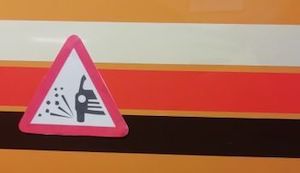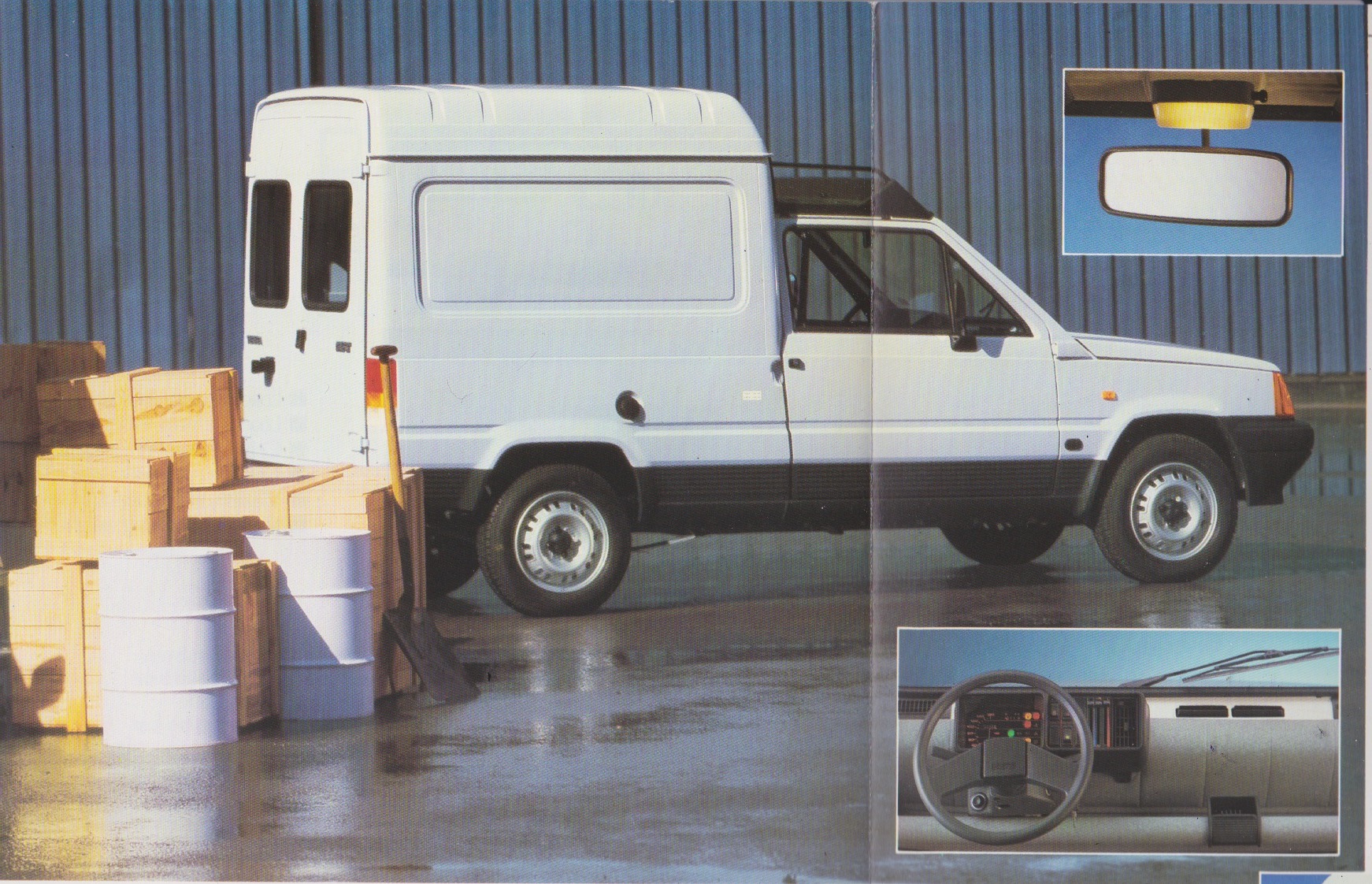The History
Picture the scene, a spring day in Italy, 1980. Fiat has just launched its new practical Panda. A Seat badged model joined quickly and sold in the few countries that were offering Fiat’s Mediterranean Seat brand.
There followed a bitter divorce between Fiat and Seat in 86 and the Spanish firm was quick to try and distance itself from the Italians by giving their Panda car a fresh new look. There was no getting away from what it was. Fiat had further developed the Panda under the skin making it a better car. Cash-strapped Seat had no such funding. Fitting plastic cladding to the side and a sloping nose fooled no one.
What they did have that Fiat’s Panda didn’t have was a useful commercial sibling. Not sold in the UK, the Seat Trans from 1981 was a large box body welded to the front of a Seat Panda cabin.
Like for like, the Trans, soon to be called Terra when the Marbella arrived, was a versatile carry-all for all the family. Available in panel van or Vista (rear windows and seats), it proved to be quite the hit with the Spanish tradesman. In Vista form, it carried the ingenious Panda 2 bar rear seat hammock. This quickly turned the rear area into a people carrier and or load lugger by twirling 2 poles like a cheerleader.
Coming To The UK
As a car, if you have ever driven an original Fiat Panda or Seat Marbella, you will remember them for being quite awful. As a design it was brilliant. In practice, a Citroën 2CV offered more comfort and more car for less car and less money.
As a van it was perfect. It was rugged, hard-working and with its big selling point, it was the right van for the few who choose to stop laughing at it and buy one.
What the Terra had was a stupidly low showroom price. At £4390 for the petrol and £4940 for the diesel, there was little that could touch it. In fact, only the Fiat-derived Yugo 55A could undercut it at £3315. The £4865 Fiat Uno was next up on the price list. Both of these were small 3-door hatchbacks with no windows and awkward loading areas. Both of these were small in size and small on payload.
Practical vans they were not. Space for space practicality came from the Citroën C15 that started at less than just under £1000 more than the Terra. You could not disagree with the C15 because it was the better van. And better than many on the market at the time. It’s why you would quite often see one on each street corner.
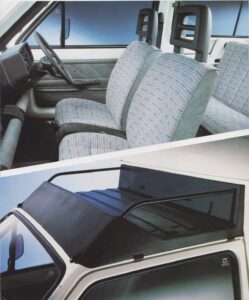
Practical
For very little of your cash you would hand over to your Seat dealer, you got even less back. A 903cc engine with 40bhp. To cope with the extra punishment the ladened van driver would inflict on the engine, Seat fitted twin springs to the valves. This was race car technology. It also helped eliminate valve bounce. For a little more money, you got a VW 1400cc diesel engine with 45hp and a brake servo.
If performance was your thing, between the 2 choices, it was difficult to choose. The petrol would be ahead at 60 by 5 seconds and with similar top speeds, it would take the diesel a further 3 miles to catch up. The diesel 8 mpg gain at 47.1mpg over the petrol was nothing to celebrate about.
However, Terra’s payloads were not to be sniffed at. At 490kg for the petrol and 520kg for the diesel, they were better than the Astravan and base model Astramax. In actual fact, the Terra was a hard act to beat. A hard-working van that could run rings around many vans but there was a catch.
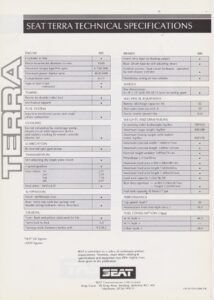
Underpinnings
The suspension was outdated by car standards. Up front, you had hard Macpherson struts. Like the Marbella which was one of the last family cars you could buy with rear leaf springs, the Terra also made do with this dead axle set-up. But instead of single leaves, the Terra gained twin leaves to cope with extra loads.
Refinement wasn’t high on the list. Despite being under the ownership of Volkswagen, build quality had improved. What hadn’t was comfort or more importantly, refinement. The optional Philips tape/radio player would struggle to drown out the din of the engine from behind the undamped bulkhead next to your feet. The rubber mat under the foot equally does nothing too. And then there was the open box area in the back.
On the plus side, Seat did give you a 4 piece bulkhead partition as standard when almost every other van had this as a tick item on the optional list.
Longevity
OK, this part is a joke. there was no longevity with the Terra. Certainly not for the price anyway. According to www.howmanyleft.co.uk in 1995, there were 4430 examples available. Today there are just 6 that survive. Despite VW’s control and improvements to build quality and construction, the Terra was a workday van and as we know, vans are subject to the biggest amount of abuse this side of a referee at a football match (oh get me, a football reference!) and the Terra was no exception to this.
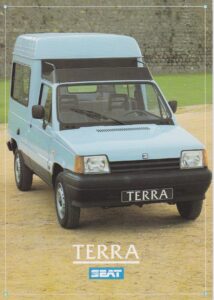
In Seat’s Own Words
The Seat Terra was, according to the brochure “Its functional good sense is delivered to you in a chic package, The Mediterranean gift for line endowing the TERRA with a distinctive presence.” Make of that what you will, I’ve not got a clue!
The Terra wasn’t all that bad. It wasn’t all that good either except for the price. There was little that could touch it. If I have to find one benefit it had, it was more practical than the Marbella hatchback and that’s being kind.
